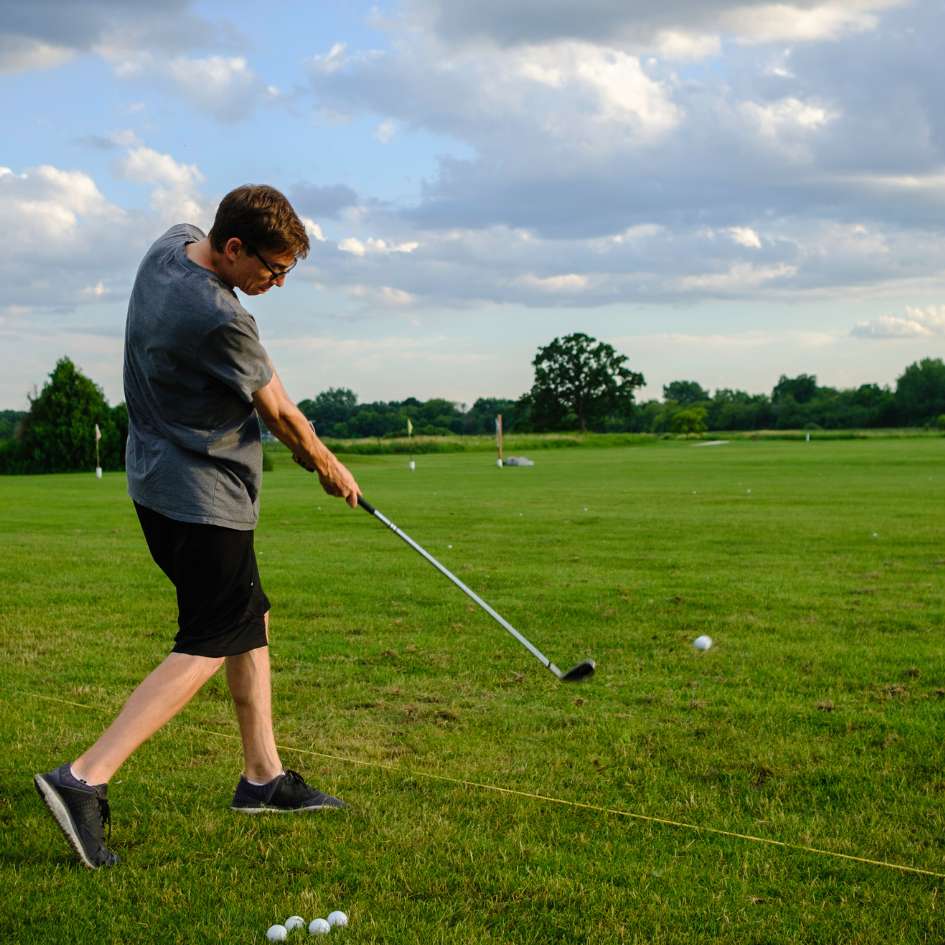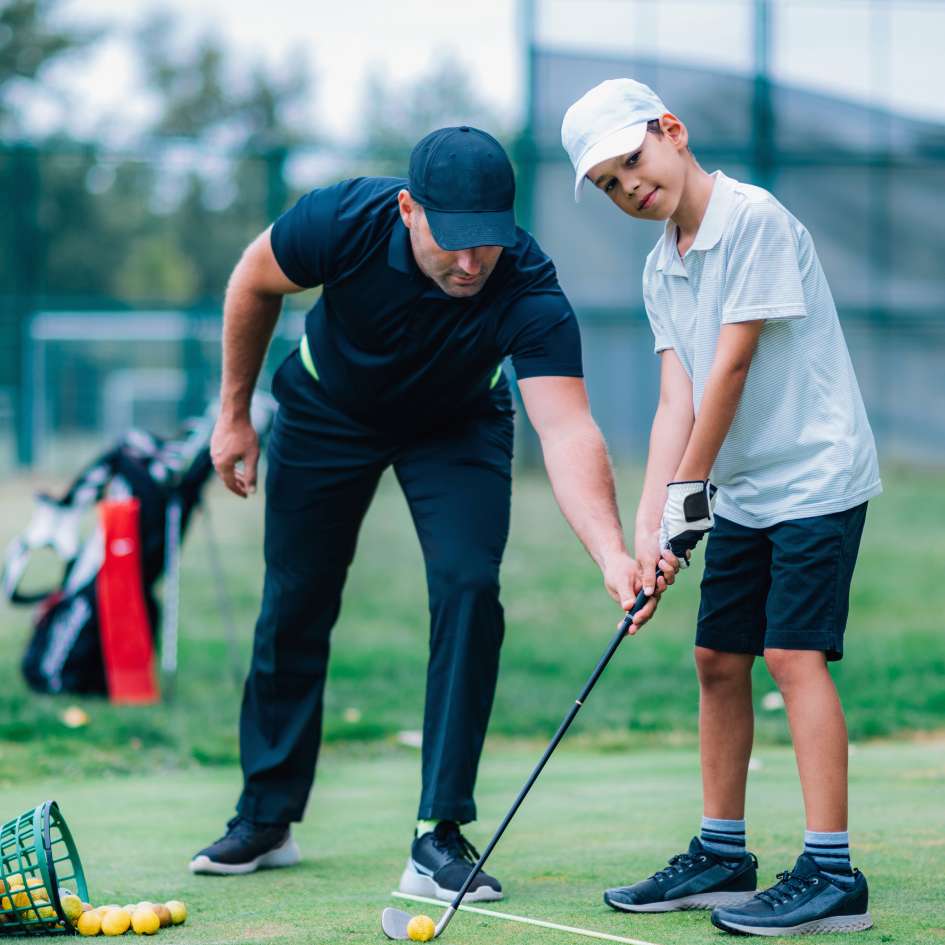
How do I improve my golf swing? 25 Checkpoints
- Home / Beginners Guide /
- How do I improve my golf swing? 25 Checkpoints

How do I improve my golf swing? 25 Checkpoints
How do I improve my golf swing? 25 Checkpoints
Strategies on How to Improve Your Golf Swing
Welcome to Golf For Beginners Academy, where we unravel the mysteries of refining your golf swing. If you find yourself pondering the question, “How do I improve my golf swing?” – you’re in the right place. In this detailed guide, we’ll delve into a variety of strategies to enhance your swing and, consequently, elevate your overall golf performance.
What you will learn (Table of Contents)
ToggleUnderstanding the Mechanics: The Foundation of Improvement
To improve your golf swing, it’s essential to understand the foundational mechanics that contribute to a successful and consistent motion.
Grip Refinement: Start by evaluating and refining your grip. A proper grip establishes control and allows for a more natural release of the clubhead.
Posture Assessment: Analyze your posture during setup. Ensure a balanced and athletic stance, promoting better weight distribution and stability throughout the swing.
Alignment Precision: Check your alignment regularly. Misalignment can lead to inaccurate shots, so ensuring proper alignment is a fundamental step in refining your golf swing.
Mastering the Takeaway: Focus on a smooth and controlled takeaway. A well-executed takeaway sets the stage for the entire swing sequence.
Balancing Weight Transfer: Practice a seamless weight transfer during your swing. A balanced shift from backswing to downswing contributes to power and accuracy.

Addressing Common Swing Flaws
Identifying and addressing common swing flaws is crucial for continuous improvement.

Slice Correction: If you’re struggling with a slice, analyze your clubface angle and swing path. Adjustments to your grip and swing plane can help correct this common issue.
Hook Reduction: For golfers battling a hook, focus on grip adjustments and swing path correction. A smoother release and controlled follow-through can help reduce unwanted hooks.
Consistent Tempo: Maintain a consistent tempo throughout your swing. Sudden changes in speed can lead to inconsistency, so practice a rhythmic and controlled motion.
Overcoming Tension: Eliminate tension from your swing by staying relaxed. Tension can hinder flexibility and fluidity, impacting the overall quality of your swing.
Enhancing Clubhead Speed: Work on increasing clubhead speed gradually. A faster clubhead contributes to greater distance, but it should be achieved through proper mechanics, not excessive force
Drills and Exercises for Improvement
Incorporate specific drills and exercises into your practice routine to target key aspects of your swing.
Swing Plane Drills: Practice swinging along the correct plane using alignment sticks or training aids. This helps ingrain the proper path for a more consistent swing.
Weight Transfer Exercises: Incorporate weight transfer exercises into your fitness routine. Strengthening key muscles contributes to a more controlled weight shift during the swing.
Balance and Stability Workouts: Improve your balance and stability with targeted exercises. A stable base enhances overall control and prevents unnecessary compensations in your swing.
Clubhead Awareness Drills: Develop a heightened awareness of your clubhead’s position throughout the swing. This awareness promotes a more deliberate and controlled swing.
Mirror Practice Sessions: Utilize mirror practice sessions to observe your swing mechanics. Visual feedback is invaluable for identifying areas that need adjustment.

Mental Approaches to Swing Improvement
The mental aspect of the game plays a significant role in swing improvement. Adopt these strategies for a positive mindset.

Visualization Techniques: Visualize successful swings in your mind before each shot. Positive visualization enhances confidence and aids in replicating desired swing patterns.
Focused Practice Sessions: Approach your practice sessions with a specific focus. Target one aspect of your swing at a time, dedicating focused effort to each improvement area.
Patience and Persistence: Understand that swing improvement takes time. Be patient with the process and celebrate small victories along the way.
Positive Self-Talk: Cultivate a habit of positive self-talk on the course. Encourage yourself, even in challenging moments, and maintain a constructive internal dialogue.
Learn from Mistakes: View mistakes as learning opportunities. Analyze each swing, identify areas for improvement, and use setbacks as stepping stones to a better golf swing.
Seeking Professional Guidance
Consider enlisting the expertise of a professional golf instructor for personalized guidance.
Private Lessons: Private lessons provide one-on-one attention, allowing the instructor to assess your unique swing characteristics and tailor recommendations for improvement.
Video Analysis: Utilize video analysis during lessons to visually dissect your swing. Seeing your swing from different angles helps identify areas that require adjustment.
Customized Practice Plans: Work with an instructor to develop customized practice plans. Targeted drills and exercises can accelerate the improvement process under professional guidance.
Regular Check-Ins: Schedule regular check-ins with your instructor to track progress. Consistent feedback and adjustments contribute to ongoing improvement.
Utilizing Golf Technology: Leverage golf technology, such as swing analysis apps and launch monitors, during lessons. These tools provide valuable data for pinpointing areas of improvement.

Ready to Take the Next Step? ⛳️
If you’re eager to dive deeper into golf’s intriguing world and master the ins and outs of the game, look no further than our “Golf For Beginners – The Ultimate Starter Guide.” Whether you’re a newbie or just brushing up on your skills, this online course has something for everyone.
⛳️ Discover the Ultimate Golf Starter Guide Right Here ⛳️
Conclusion: Your Journey to Swing Mastery
Congratulations! You’ve navigated through our comprehensive guide on how to improve your golf swing. Whether you’re a novice or seasoned player, continuous improvement is a shared goal in the golfing community. Apply these strategies, stay dedicated to your practice, and revel in the evolving experience of becoming a skilled and confident golfer. Golf For Beginners Academy is here to support you every step of the way. Happy swinging!
golfforbeginners
Recent Comments
Copyright @ 2024 - Golf For Beginners Academy
